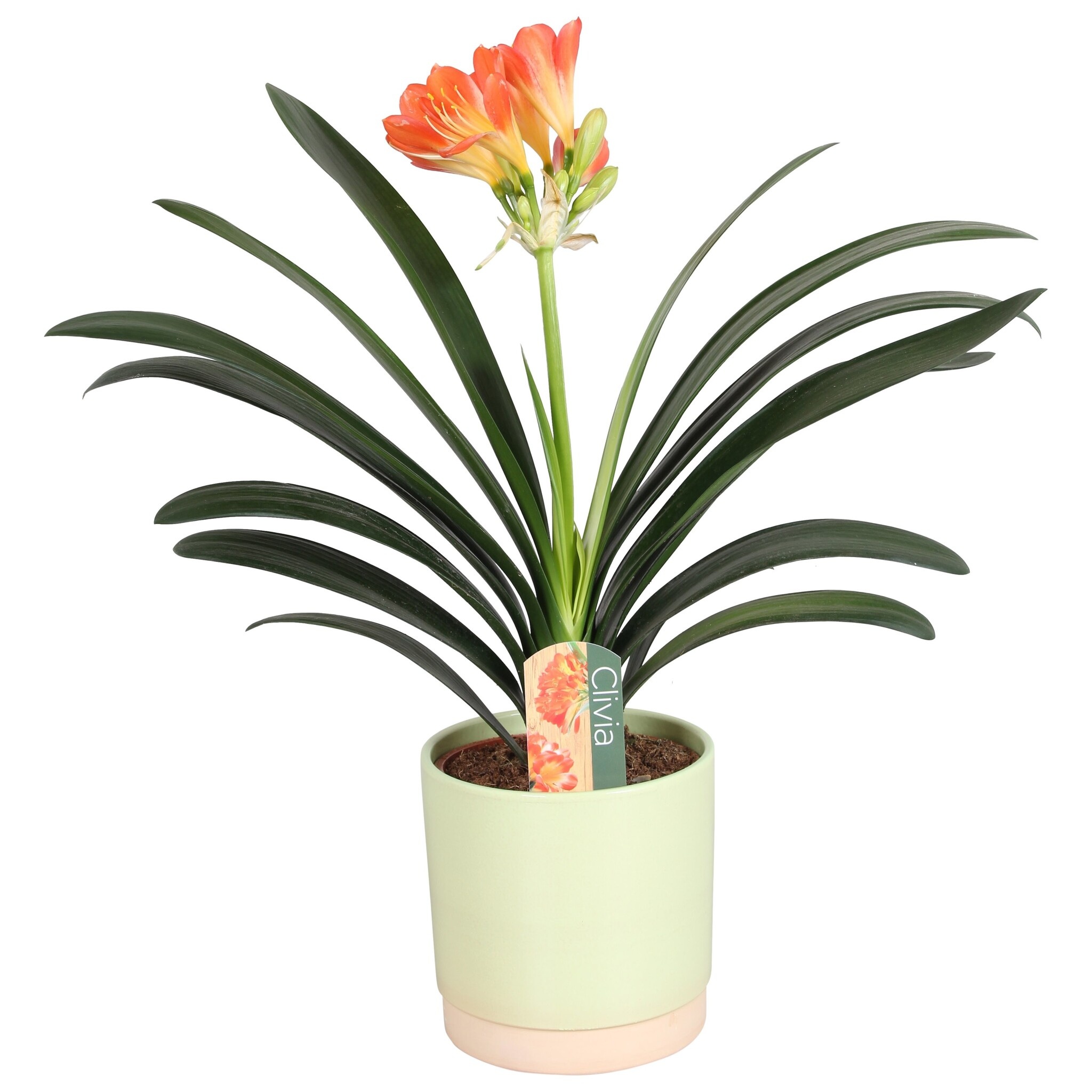
Clivia Information & tips - Plant Guide
- Water regularly
- Partial shade, no direct sunlight
- Not air purifying
- Feeding once a month (summer)
- Toxic to pets
- Repot every 2 years
Intro
Clivia is a genus that has 3 species, all originating from South Africa. The plant is named after Lady Charlotte Florentina Clive, Duchess of Northumberland and governess to Queen Victoria. The first ones are said to have blossomed on her estate.
Location
A dark place is best suited for the Clivia. The plant should never be in full sun. The Clivia can withstand temperatures between 2 and 30°C. The flowering time of the Clivia is longest at a temperature around 10°C.
Clivia care
A Clivia requires moderate watering. It is sufficient to water once a week and keep the soil slightly moist. In the winter period it is sufficient to water once every 2 weeks.
Power supply
Due to the slow growth of the Clivia, fertilization several times a year is sufficient. We advise you to repot your Clivia after 2 years so that the roots have more space. Any normal potting soil is suitable for this.
Rest period
In order to flower, the Cliva miniata must have a rest period, this rest period stimulates bud development. The natural resting period of a Cliva is winter. For good flowering you can include a rest period, then place your Clivia miniata in an environment with a temperature of 5 to 12 degrees Celsius for 2 months. The plant then needs little light and very little water. If the soil remains slightly moist, this is sufficient.
After this rest period the stem will stretch and a bud will appear. After flowering the stem can be broken out or cut. You can repeat this process many times.
Origin
The Clivia miniata, like the Calla, originally comes from South Africa. This plant was introduced to Western Europe in the 19th century and was mainly cultivated in Belgium for many years. The Clivia miniata was only grown commercially on a large scale later. This is due to the long and complicated cultivation period of this plant. The two-year cultivation period makes the Clivia miniata a relatively expensive plant.
Diseases
The Clivia can suffer from scale or mealybug. This can be prevented by regularly spraying the plant. These pests do not like damp places. If scale or mealybugs do appear on the plant, it is important to combat this as quickly as possible with a biological or, if desired, a chemical pesticide.
If the sun shines too brightly on the plant, the leaves may discolour and if spots appear on the leaves, it indicates that the plant is getting too cold and too much water.

